Ways to Travel
Best beach bags for home and holidays
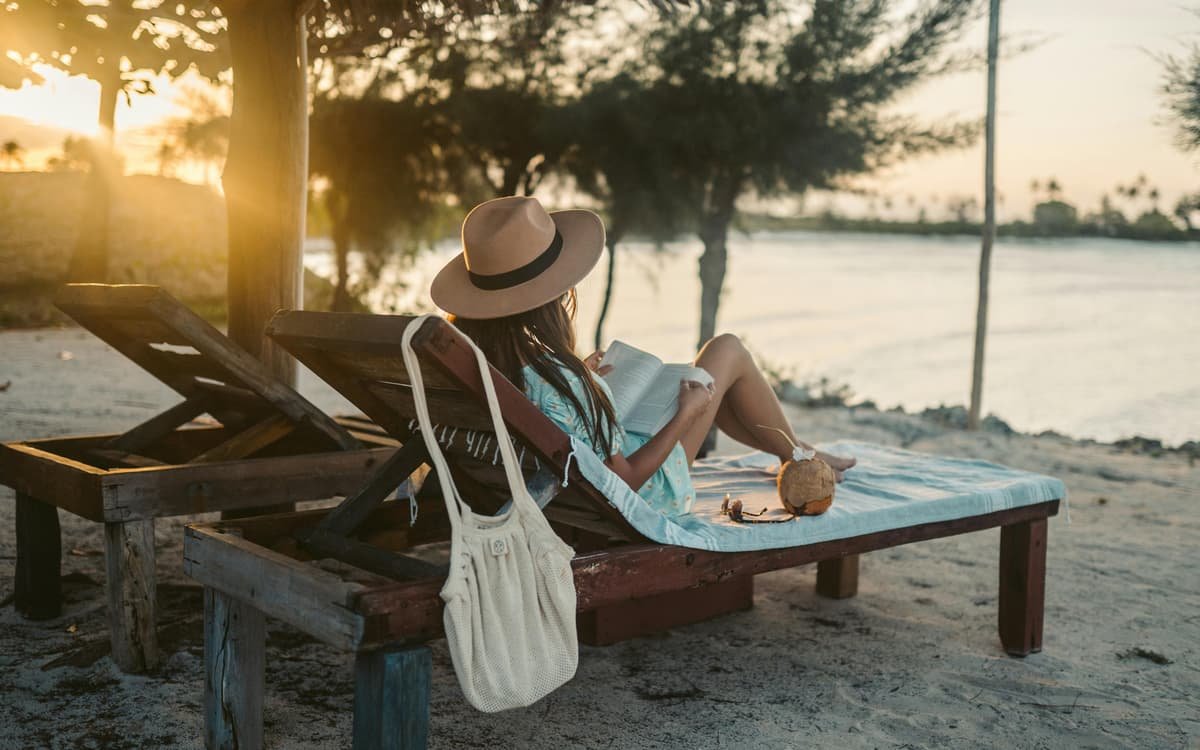
A beach day is a happy day, whether you’re heading to a British shore or somewhere further afield. Sun, sea and (hopefully) sand: it’s just the tonic our screen-overloaded eyes are crying out for.
But whether you’re travelling by road, rail or air, there’s one essential you can’t go to the seaside without. SPF.
But also, a decent beach bag to chuck in said SPF, plus all the other bits and pieces that will make your trip more enjoyable. A good read, the paper kind rather than reading memes off your feed, sunglasses to reduce the glare of the sun, and a towel to dry off after a dip in the water are the first things that spring to mind.
Given all this, the list of requirements for beach bag shopping is as follows:
What to look for in a beach bag
- Size: You’ll want something that can accommodate everything comfortably, ideally leaving a hand free for an ice lolly or a cocktail.
- Durability: A design that you can shake sand out of easily or doesn’t accumulate much of it in the first place is desirable for obvious reasons (mesh and straw bags are ideal).
- Pockets: It’s much easier to avoid upending the entire contents of your bag onto the sand if you have dedicated nooks and crannies to stash all your things. I’m talking about those smaller items that tend to sink to the bottom, like keys, coins and headphones. Pockets, compartments and sleeves make it easy to grab what you need quickly.
The nice-to-haves-but-not-strictly-necessities include some sort of insulated cooler space to keep valuables and cans so you can have a refreshing drink without risking your spot on the sunlounger. And, of course, because everything should be done with a degree of style, a great design that’s versatile enough to use for a beach-city break or picnicking is great too.
But you can leave the checklist to us, because we’ve rounded up the best bags to take on your next beach break below.
From designer totes made from palm leaf and raffia to folding options for foreign holidays and a backpack designed for rugged coastal adventures, find the best of the bunch here.
Ways to Travel
Simon Calder’s eastern European beach breaks that are as good as the Med
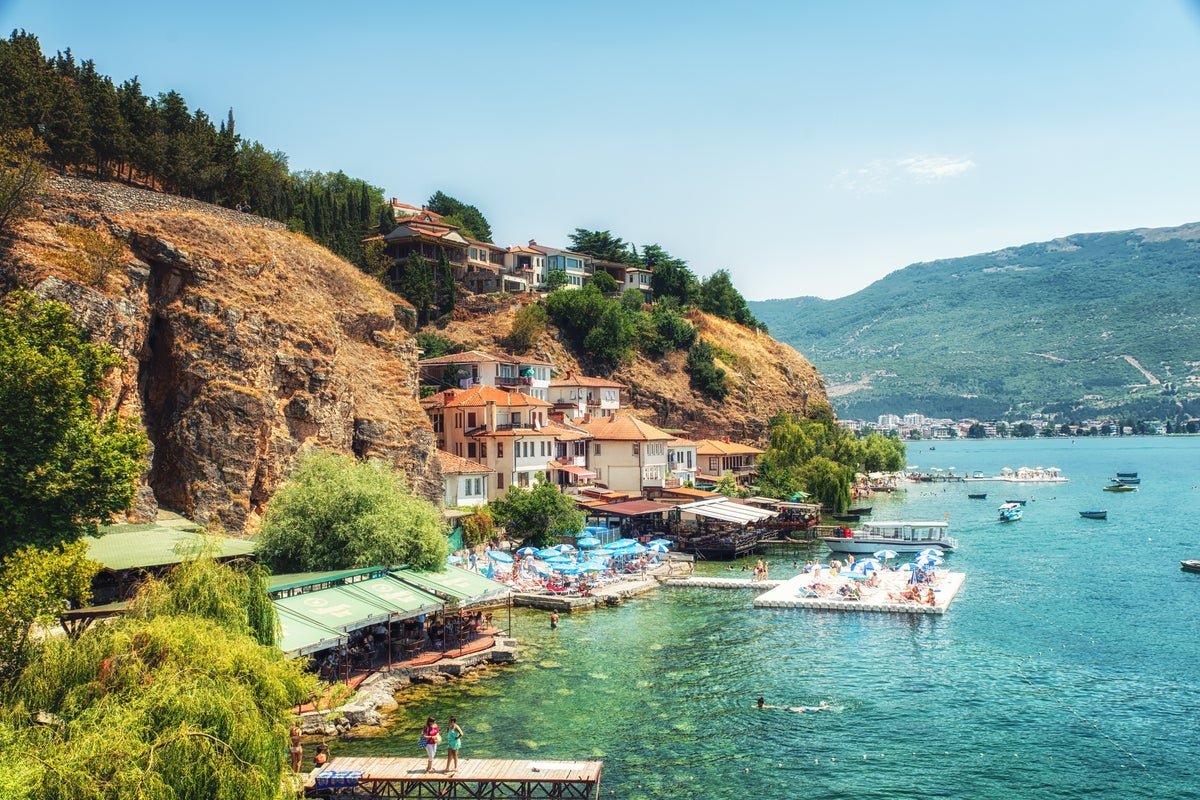
Despite the puny pound, a bargain-basement waterside holiday in Europe is still a possibility. Just move beyond the obvious tourist destinations and head east – to the likes of Poland, Latvia and Albania – where you will find a warm welcome, intriguing history, and a touch of the exotic.
Here Simon Calder shares his top five destinations to enjoy the beach away from the usual holiday crowds.
Sopot, Poland
The Baltic coast of Poland is sea-bathing heaven, though the water could be a touch warmer. The shore comprises a couple of hundred miles of sandy beach. And my favourite spot is the handsome 19th-century resort of Sopot – just a 20-minute train ride from the city of Gdansk, beyond the former Lenin shipyards. You can enjoy a vast swathe of soft white sand and benign sea on a beach that is ideal for young families, and 20th-century prices. If you can tear yourself away from the beach, take a trip from the end of the pier across the bay to Hel – a pretty fishing village at the end of a spit, and the eastern extreme of Puck County.
Swinoujscie, Poland
At the far west of the Polish Riviera, Swinoujscie is hard to pronounce (try “schvin-oo-oyshter”) but easy to enjoy. The approach is fun: the train from handsome and fascinating Szczecin (“shchetsin”) takes you to a town that suffered gravely in the Second World War but retains some classic 19th-century airs. The beach of soft white sand is blissful, and the hinterland has much of interest on both the Polish and German sides of the border.
Jurmala, Latvia
Latvia is not the go-to nation for seekers of long, sandy beaches. But perhaps it should be. This Baltic republic is blessed with a 20-mile silvery strand presided over by the spa town of Jurmala – just 37 minutes by train from the capital, Riga. Much of the beach is fringed by pine forest. In town, the architectural repertoire ranges from Soviet order (Brezhnev and Khrushchev were regular visitors) to Art Nouveau joy.
Durres, Albania
Most people who land at Mother Teresa International airport, the gateway to Albania, head 20 minutes southeast to the capital, Tirana. But I aim half an hour southwest, to Durres on the Adriatic coast: a beach resort with Roman remains, a bustling port, and the Peeping Tourist museum – a testament to the decades under hardline communism when every overseas visitor was spied upon.
Ohrid, North Macedonia
Amid the mountains in the deep south of the former Yugoslavia lies the lakeside town of Ohrid. The town is a mere 10-minute drive from the airport. It combines Unesco world heritage-listed ancient monasteries with its status as a fun resort beside the deepest body of water in the Balkans: Lake Ohrid. It has a plausible stretch of beach, flower-strewn lanes through which to wander, and decent restaurants serving tasty Balkan cuisine at prices from a distant era. You can also take a trip into soaring mountains, or make a circuit of the lake, including a stretch through Albania: don’t forget your passport.
Ways to Travel
The North African beach holiday that’s surprisingly cool in summer
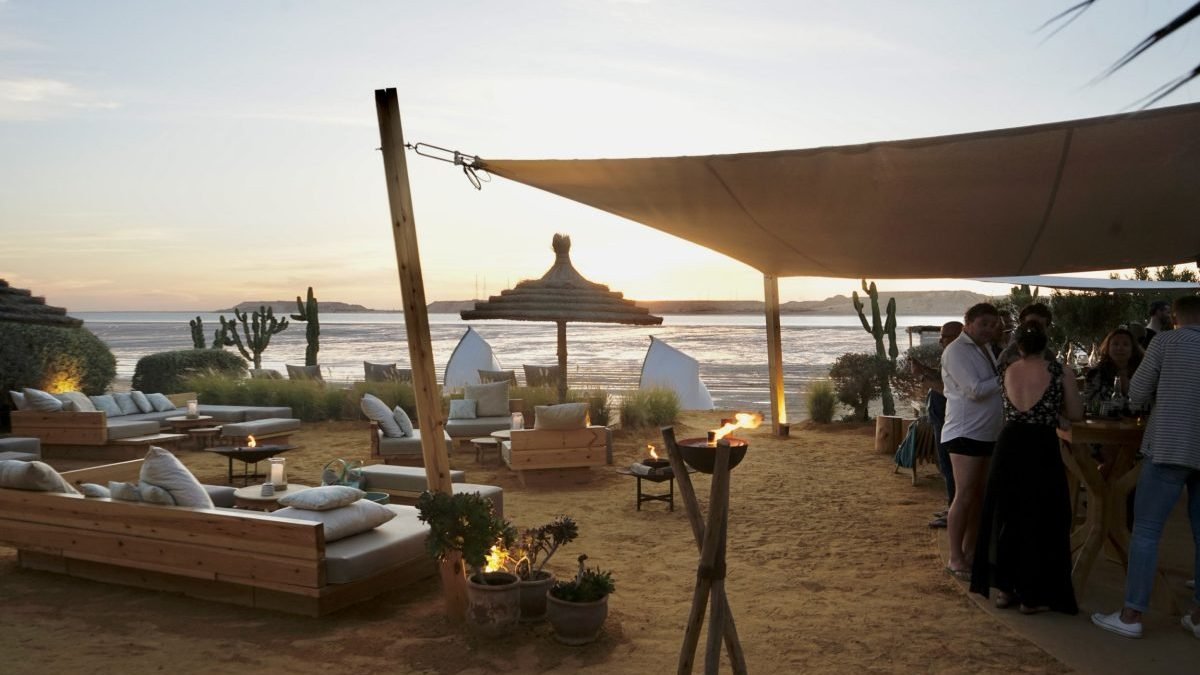
A little-known peninsula, Río de Oro is flanked by Atlantic swells and a tranquil lagoon
It’s interesting what you notice when arriving at a destination by road – particularly the sand dune-flanked single carriageway that welcomes you onto the Río de Oro peninsula. For me it was the raw beauty. The sense of space and remoteness. The simplicity of the colours: cobalt blue sky, grey-tarred road, soothing beige sand.
This 25 mile-long peninsula is home to the Saharan city of Dakhla, long stretches of wild coast, empty beaches and an ocean lagoon.
It’s situated in Western Sahara, which the UN refers to as a “non-self governing territory”. Its status is disputed between Morocco and a local independence movement – but despite its ambiguous political status, the peninsula is not considered unsafe (check Foreign Office advice and coverage with your insurance provider).
It’s also easier to get to from Europe, with Ryanair recently launching direct flights from Madrid and Lanzarote.
On my first trip to the city – a four-day visit in 2023 – I flew from Agadir in Morocco, where I live. This time, though, I drove a 750-mile coastal route for a three-week stay.
A single road leads in and out of the peninsula and follows its eastern edge – the “inside”, from which Dakhla takes its name (dakhl meaning inside in Arabic). This “inside” is home to a shallow, tidal lagoon sheltered from the Atlantic swells that roll in on the west of the peninsula. It’s an otherworldly scene, often filled with colourful kites overhead, and sometimes flamingos. Traffic is minimal, unless you count the wild camels. On the southern tip is Dakhla, a city whose name is often used to refer to the whole peninsula.
Due to its natural shelter and consistent winds, the peninsula is popular for kitesurfing, wingfoiling and other wind-powered watersports. The climate is characterised by dryness, sunshine and wind, especially from May to September. Year-round, the Atlantic wind keeps it cooler than inland areas, with summer highs of around 27°C.
I’m not a kitesurfer, but I found other ways to experience the natural beauty, including a 4×4 tour to the White Dune. Arriving at low tide, we scrambled up, stopping to take in the lagoon views before sandboarding back down. I admired Dragon Island, a rocky isle that’s surrounded by the lagoon at high tide, from a distance – others kayak, sail and even swim to it.
Until recently, most tourists would stay at the camps dotting the lagoon shore, but there is a growing number of options in the city. The centre is a maze of construction, and is changing fast.
In the evenings, the dusty streets fill with an eclectic mix of Sahrawian women in lightweight melfha fabrics and men in blue Touareg robes, foreign businessmen and kitesurfers in sunglasses.
The sun, wind and activity left me with quite an appetite, which was fortunate, given Dakhla’s a paradise for fresh fish and seafood. One highlight was Tahla Mar, an oyster farm and seafood restaurant on the edge of the lagoon. In town, Le Marin Pêcheur, serves juicy king prawns, while Gladys, run by women who remembered me on each visit, offers great-value dishes (tagine was £4).
Days were spent walking my dog along the beaches and writing in cafes like Le Passage and Marh Coffee Roasters. At the small souk, which mostly caters to residents, I picked up Saharan tea and fabrics.
Back on the highway, I was grateful for having visited a place in its rawness, before the crowds arrive.
How to do it
Royal Air Maroc flies Gatwick to Dakhla via Casablanca; Air Arabia flies from Agadir or Casablanca; Ryanair flies from Madrid and Lanzarote. Hotel Fyndy has doubles from £25, B&B. Kite House has B&B doubles from £70. Lagon Energy has full-board rooms from £110pp. visitmorocco.com/en/travel/dakhla
Ways to Travel
PAKISTAN’S GENDERED TOURISM REVOLUTION – Newspaper
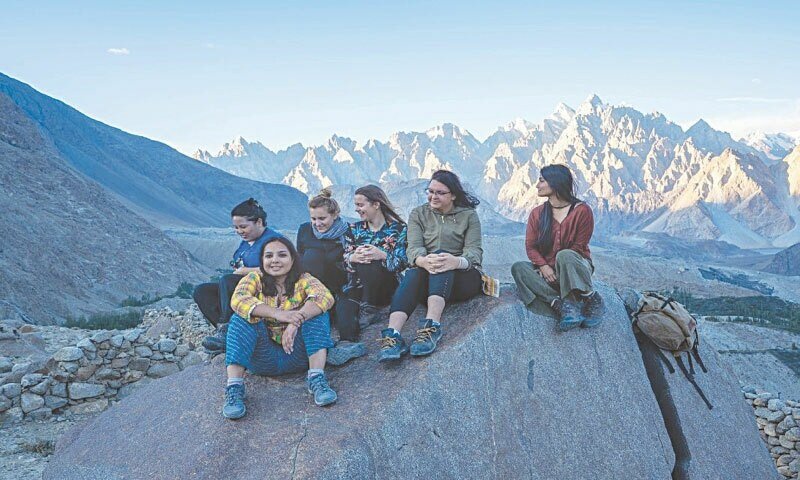
Much of the recent rise in wellness retreats, adventure tourism and group trips across Pakistan has been spearheaded by women intent on carving out spaces where other women can safely travel.
In a small quiet area in Skardu in July 2024, a group of female travellers lay down to watch the sky and star-gaze. Within the first 40 minutes, they’d counted 12 shooting stars, and no one was in the mood to leave. In fact, for many, the experience meant so much that they came back again two days later, choosing to skip the planned movie night to instead spend another few hours under the stars.
For Sawab Husnain, founder of The Cherry Club — a luxury wellness retreat she hosts at the Byarsa Hotel in Skardu — this moment made all her planning and efforts worth it. Husnain, who spent six years of her childhood living in Skardu on and off, tells Eos that her time there allowed her to explore the area in a new way — finding spots and locations that were off the beaten path. This became a key inspiration once she started planning her retreats for The Cherry Club last year, where she focused on curating unique experiences for her fellow travellers.
Husnain reveals, “Initially, I wanted people to see Skardu the way I see it, which is at a slower pace, because a lot of trips up north are very hustle-and-bustle, and I think nature is best appreciated slowly. Even at a popular place such as Upper Kachura Lake, we have a secret spot and, whenever I take someone there, they are truly able to enjoy their surroundings.”
Husnain’s is one of a growing number of wellness and travel retreats in Pakistan being run by women. Husnain plans each part of the retreat in a way that’s designed to show the group she’s leading new aspects of Pakistan’s north. This includes the planning of new activities and experiences that help visitors connect with nature. But it’s not just Husnain’s knowledge that makes her so popular, particularly with women of all ages looking to travel up north.
Much of the recent rise in wellness retreats, adventure tourism and group trips across Pakistan has been spearheaded by women intent on carving out spaces where other women can safely travel. As a result, many of these initiatives are more than just relaxing getaways — they offer a
place where women can find camaraderie, joy and independence
For many female travellers, the manner in which Husnain tailors their stay in Skardu is what makes the experience worthwhile. According to Husnain, “The reason there are more and more women signing up for our retreat is because I have curated the retreat as something designed by a girl for other girls. There are very few safe travel spaces for women in Pakistan to begin with, so when they find a place like this, they want to hold on to it.”
She adds that, while she does run mixed groups as well, men need to be part of a couple or family, or they need a reference, as single men are not allowed to sign up with Husnain’s group. After having only 10 people for her first retreat last year, Husnain’s retreat this year hosted 33 people, ranging across various ages — from couples that have been married for almost a decade, to teenage girls in search of adventure.
The exciting thing is that The Cherry Club is just one travel retreat being offered that’s gained popularity in recent years as Pakistan sees a boom in local tourism, particularly after the Covid pandemic and the travel restrictions that came with it. But what’s been more interesting in recent years is that, in a country known mainly for its adventure tourism and high mountain peaks — which have long attracted climbers from all over the world — women are now carving out a very unique travel space for themselves.
From taking a break at yoga and wellness retreats, to exploring unknown parts of the country as solo travellers, women increasingly are emerging as shapers of Pakistan’s travel industry in a completely new way over the last five years.
From Karachi to Islamabad, an increasing number of women are signing up to travel to different parts of Pakistan, with areas such as Skardu, Hunza and Fairy Meadows being some of the most popular. These areas are seeing many more women enter the tourism industry, as local tour guides, cafe owners and even climbing instructors. In many ways, the rise of women and women-led initiatives in the Pakistani tourism landscape has completely reshaped the industry in terms of accessibility, how travel is perceived and the resources that are available.
With several women now at the helm of this travel revolution, it is clear that a lot has changed. The industry is opening itself up to new experiences that are available for travellers, irrespective of their gender. There is now also a deeper, more personal connection between travellers and tour guides as the concept of seeking out unique experiences through travel and retreats becomes more appealing.
Where Pakistani travel was once linked only with those daring enough to climb its mountains, or families going for a trip up north, it is now expanding into a diverse range of experiences. For many women, these new offerings provide them with a chance to ‘find themselves’ in a completely new way that had been previously unavailable to them.
More importantly, this has also empowered women, both those who are travelling and those who are facilitating them, to be a part of Pakistan’s growing tourism industry. Beyond that, this transformation is also giving women entrepreneurial opportunities and a sense of independence that is often hard to come by for women in Pakistan.
guides, cafe owners and climbing instructors | Instagram/Tabassum Saher
A RETREAT FOR THE BODY AND MIND
For Fatema Siddiki, the founder of the art therapy platform therapeuArt, and Hira Haq, who runs the community platform Girls and the City, craving that sense of independence is what inspired them to plan their upcoming retreat, Midway to Me, which they’ll be hosting in August at Samarkand House in Murree.
“As an adult, planning women-centric activities is very different,” explains Siddiki. “You don’t find anyone else to travel with and not a lot of people are into solo travelling. Some are, but most want to experience these things with other people, so providing these retreats gives people a space where they can relate with others and have their own space as well.”
Haq also points out that, while they initially planned to have the retreat open to everyone, they decided to make it women-only after seeing that almost all of their sign-ups were women. “Most of these women are coming alone,” Haq adds, “and because we have shared rooms, they’ve signed up to share rooms with a stranger.”
When women started getting in touch with the organisers to finalise their plans, Siddiki noticed one common pattern. “While talking to the participants, the one thing that is similar for all of them is that they are all exhausted of ‘playing a role’ for someone else in their life,” Siddiki shares. “They just want to be themselves at the end of the day, reconnect with who they are and not have to play a role based on the expectations of others or society.” Siddiki believes that even just the four-day get-away they are providing can mean a lot to many of these women.
While this is the first time they’ll be hosting a retreat, both Haq and Siddiki are avid travellers and, having had experience hosting activities and events for large groups of people, they’ve been very hands-on with how they are planning the upcoming retreat. Haq says, “The retreat has been designed so that, in the middle of the day, women can just do what they want to do. It’s designed for women to take a break.”
Sereena Chaudhry, a corporate lawyer-turned avid traveller and Reiki (a Japanese form of healing) master has been attending women-led retreats in Pakistan’s northern areas since 2014. She has organised and led trips in the mountains and across Pakistan’s coastal region since 2019. Since 2022, she has been leading retreats with her friend and business partner, Salina Taqi. While Chaudhry has led and attended both women’s-only groups and mixed groups, she says it’s the women’s-only groups that really allow women to “let their hair down.”
Husnain agrees, pointing out that “if we were running the same retreat with more men than women, it kind of changes the overall vibe of the space. There’s a certain level of lack of comfort that comes with male-dominated spaces.”
Husnain, Chaudhry and other tour and retreat organisers have all noticed that when women, especially first time travellers, travel in Pakistan, they are always surprised and relieved by the experience. Chaudhry says, “They love it and can’t wait to go back. They’re pleasantly surprised by how safe they can feel in public in their own country, how they’re treated with respect by the men they come across in the northern areas. The people there are so kind and hospitable by nature.”
TAKING THE PLUNGE
For Ayesha Ehtisham, her first-ever solo travel experience with the travel group Teen Musafir was so rewarding that she later joined the group as their social media associate and now regularly travels with them. “Our main goal is to normalise travel for women in Pakistan. Even now, I feel that many girls are a little shy when they start the trip. They’re cautious, looking over their shoulder. But then they realise that they are surrounded by women and they no longer feel as scared or guarded.”
For Teen Musafir’s project manager Mahrukh Siddiqui, who also started travelling with the group before joining and leading retreats herself, one of the biggest successes has been seeing women take that first step to travel independently, which then acts as a stepping stone for many women to become more independent.
“For most of the girls, it’s not just a trip — it’s the first time they are stepping out of their comfort zone,” Siddiqui explains. “This one girl told me that she fought with her parents a bit to get permission to travel by herself. She knew that going back home after her travels and showing to her parents that everything went okay would lead to a greater sense of trust and understanding.”
This is also what has encouraged Zahra Noor, a high altitude mountaineer on a campaign to summit the 14 peaks (the 14 mountains in the world over 8,000 metres in elevation), to pursue her interests and create a space where others can also join in. Through her start-up Escape, which focuses on increasing adventure tourism in Pakistan, Noor hosts “conventional” tours to tourist destinations, exploring areas for trekking, and “unconventional ones”, which focus on high-altitude mountaineering. Noor shares that she had started considering only focusing on her “unconventional” tours in an effort to focus on her own mountaineering skills. However, a trip to Fairy Meadows changed her perspective.
While hosting a women’s-only trip to Fairy Meadows a few months ago, Noor realised the power these trips hold for the women accompanying her. By chance, most of the women on the trip observed hijab or some level of pardah [veil], and most of them shared with Noor that they were able to really enjoy themselves due to the female-centric space she had created.
“They were so happy and so relaxed to be able to be without men,” says Noor. “Most of them were solo travellers, and I felt so happy and humbled. This is what keeps me going.”
EMPOWERING WOMEN THROUGH TRAVEL
For many Pakistani women who travel solo for the first time, the decision and the experience that follows is one that marks the start of their independence — of making decisions beyond just the roles they play in their everyday lives. Haq believes that travel is a basic need and a right that everyone should have access to, and yet most Pakistani women don’t. Haq tells Eos, “Travel for women isn’t a big thing abroad, but it is here. We want to make it a thing in Pakistan that women can do easily.”
When Aneeqa Ali started her experiential travel company The Madhatters in 2017, her aim was simply to promote local cultures in lesser known areas of Pakistan. For her, The Madhatters came about due to her passion for travelling and a desire to inculcate a love for and understanding of Pakistan’s traditions, customs and local communities within fellow travellers.
But, for Ali, the journey has been far from easy and continues to present several challenges: “Every time I travel to a place within Pakistan, I realise that there are a lot of gaps in our tourism industry, especially when seen from the perspective of female travellers. There are a lot of challenges female travellers have to face and many of their specific needs are often neglected, since tourism in Pakistan is a very male-dominated industry. Whether you look at most travellers, tour operators, hotel owners or transporters, it’s a world of men.”
When she first started, Ali’s focus wasn’t necessarily on women-centric travel. It was only when she saw just how many women were signing up for a woman-led tour that she realised the gap there was in the market. The Madhatters now has a team of female guides in many areas — a job once considered to be only for men — and has made an effort to support countless local women-led businesses, from cafes to carpet workshops.
In Gulmit, Hunza — which is an area Ali has frequently travelled to, both on her own and as a tour guide — multiple women point out the changes they’ve observed due to the increase in women-led tourism and the impact this has had on local women-led businesses.
Shamim, who co-owns Korgah Carpet Centre with four other women, says she has noticed a drastic change in the demographic of travellers to the area in the past few years. Korgah Carpet Centre specialises in traditionally woven hand-made carpets, and this female-driven initiative has only been bolstered by the increase in female travel groups visiting the area. “For the last three-four years,” Shamim says, “lots of groups have been coming here and most of them are women. Aneeqa [Ali] was the first woman who led a group here, and she’s really supported local women across our various industries.”
Shamim adds that the increase in women travellers has also led to local women interacting with tourists in a different way. “When women come we can sit with them in a more relaxed way. We can talk to them about work, the area, travel, and so I think it’s great that women are playing so many multi-faceted roles in the region’s tourism.”
Rashida, the founder of Bozlanj Cafe in Hunza, echoes similar sentiments. “Initially, there were no women involved in tourism and local industries here, but now there are so many women working and people are hiring women. My co-founder and I want young girls to join the tourism industry and uplift themselves.”
Bozlanj Cafe has also seen a marked increase in business, both with Ali’s support and the general increase in tourism in the area. “I’ve never had a negative experience,” Rashida says, “no one has ever misbehaved, and people even tell me I’m giving food for very cheap.” She does, however, laughingly add that tourists from Karachi often miss the spiciness of their food when they’re travelling up north.
For Ali, these positive impacts on locals and travellers alike are what make her job so rewarding. Ali’s trips are all about adventure and going to places where others don’t, in an attempt to push people out of their comfort zone. Ali adds, “We do offer some women-only tours and, in all such tours, one common factor is the sisterhood and bond that forms during the trip. There’s a huge difference in terms of how the general vibe of the tour is when it is a mixed tour, as compared to when it is a women-only tour. In the latter, I feel the women are always super-helpful towards each other, and the human-to-human connection on that tour is far deeper and more intense.”
It’s not just the travellers interacting with each other that helps form bonds and connections. Interacting with the communities they are visiting helps them see the locals and their way of life in a new light as well.
“Women also appreciate women working in the tourism industry a lot more,” Ali says. “They appreciate that women tour guides are accompanying them and they are supporting women-led businesses. They really love this part and they want to see how women are living their lives in this part of the world.”
TRANSFORMING LOCAL TOURISM
It was during her travels and interactions with local communities over five years ago that Ali first met the 17-year-old Tabassum Saher in Hunza. Saher’s father was a tour guide in the region and his young daughter had always harboured a passion for travel. Now 22-years-old, Saher is a Tourism and Hospitality major at the Karakoram International University in Hunza. Saher says that meeting Ali changed what she thought was possible for her own future and led to her currently working as a tour guide in Hunza.
The first time Saher found herself waiting on the side of the road for passengers that she had to guide, she felt a sense of fear and uncertainty. But, after five years in the field, Saher says she’s come out the other side as a completely different person.
Last year, she saw her efforts being recognised in a new way. In the midst of a grass-skiing competition in Kashmir, the young travel enthusiast received an unexpected call. She’d won the Best Tour Guide Award at the National Tourism Awards 2024. It’s not just the recognition that she’s proud of, it’s the financial independence she’s gained along the way that has helped to transform her life and give her a sense of independence.
“I am paying for my studies myself by working in the tourism industry — from my university fees, to my food and hostel fees,” says Saher. “I didn’t have to ask my parents for money.”
While women working in Pakistan’s tourism industry, especially in adventure tourism, is still a rare sight, many women are breaking this mould and are changing perceptions along the way.
Zeba Batool started working as a tour operator in Gilgit-Baltistan while pursuing her certification as a mountaineering instructor with the American Mountain Guides Association. For Batool, one of the biggest positive impacts the expanding tourism landscape has had in Pakistan is that it has allowed many women to take charge of their own lives. It has given them the opportunity to become independent, to take up public space and to connect with nature.
Noor has felt that impact in her own life as well: “When I started solo travelling, I experienced a totally different version of myself. I was 20 when I started and, in those two years, I’ve changed a lot. I feel more independent in different situations in my life now and my decision-making has improved.”
AN ONGOING EVOLUTION
With several women now at the helm of this travel revolution, it is clear that a lot has changed. The industry is opening itself up to new experiences that are available for travellers, irrespective of their gender. There is now also a deeper, more personal connection between travellers and tour guides as the concept of seeking out unique experiences through travel and retreats becomes more appealing.
“Women are able to travel and feel safe due to the presence of other women,” says Siddiqui, “and that’s why Pakistan’s travel industry is on the rise,” adding that even several men prefer travelling with Teen Musafir because of the safe and unique experience they are able to offer.
But Ali, who’s been around long enough to have witnessed these changes, and has spearheaded many of them herself, believes so much more can be done.
“Right from the get go,” Ali says, “people were telling me it’s not a woman’s field. I now have a lot of international partners and companies I work with who value what women bring to this field. I feel the industry has opened up a little bit for women and I do feel we’re on the right track. With the right kind of support and systems in place, we can come at par with international tourism standards. However, there has to be a constant effort to make this happen — it’s not going to be an overnight change.”
For every woman who’s played a role in shaping the future of Pakistan’s evolving tourism industry, the journey has presented several challenges and forced them to step out of their comfort zones. But the path they have charted has opened new windows of opportunity for women across the country — and that’s what keeps many of these women coming back for more.
The writer is a journalist and the founder of
Echoes Media. X: @anmolirfan22
Published in Dawn, EOS, August 3rd, 2025
-

 Brand Stories2 weeks ago
Brand Stories2 weeks agoBloom Hotels: A Modern Vision of Hospitality Redefining Travel
-

 Brand Stories1 week ago
Brand Stories1 week agoCheQin.ai sets a new standard for hotel booking with its AI capabilities: empowering travellers to bargain, choose the best, and book with clarity.
-

 Destinations & Things To Do2 weeks ago
Destinations & Things To Do2 weeks agoUntouched Destinations: Stunning Hidden Gems You Must Visit
-

 Destinations & Things To Do1 week ago
Destinations & Things To Do1 week agoThis Hidden Beach in India Glows at Night-But Only in One Secret Season
-

 AI in Travel2 weeks ago
AI in Travel2 weeks agoAI Travel Revolution: Must-Have Guide to the Best Experience
-

 Brand Stories4 weeks ago
Brand Stories4 weeks agoVoice AI Startup ElevenLabs Plans to Add Hubs Around the World
-

 Brand Stories3 weeks ago
Brand Stories3 weeks agoHow Elon Musk’s rogue Grok chatbot became a cautionary AI tale
-

 Asia Travel Pulse4 weeks ago
Asia Travel Pulse4 weeks agoLooking For Adventure In Asia? Here Are 7 Epic Destinations You Need To Experience At Least Once – Zee News
-

 AI in Travel4 weeks ago
AI in Travel4 weeks ago‘Will AI take my job?’ A trip to a Beijing fortune-telling bar to see what lies ahead | China
-

 Brand Stories4 weeks ago
Brand Stories4 weeks agoChatGPT — the last of the great romantics



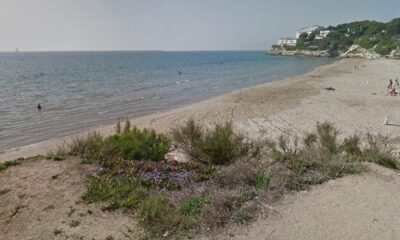







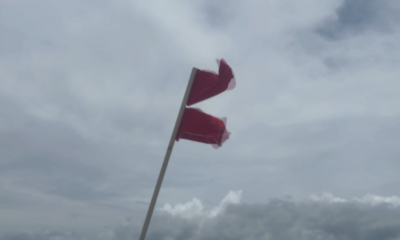

You must be logged in to post a comment Login